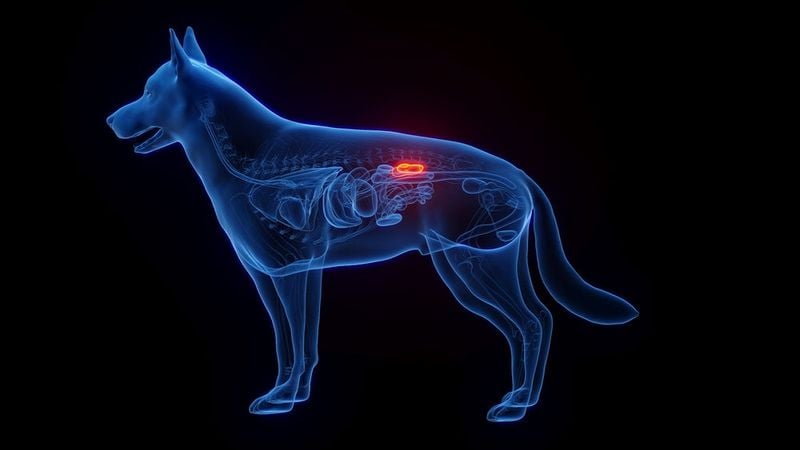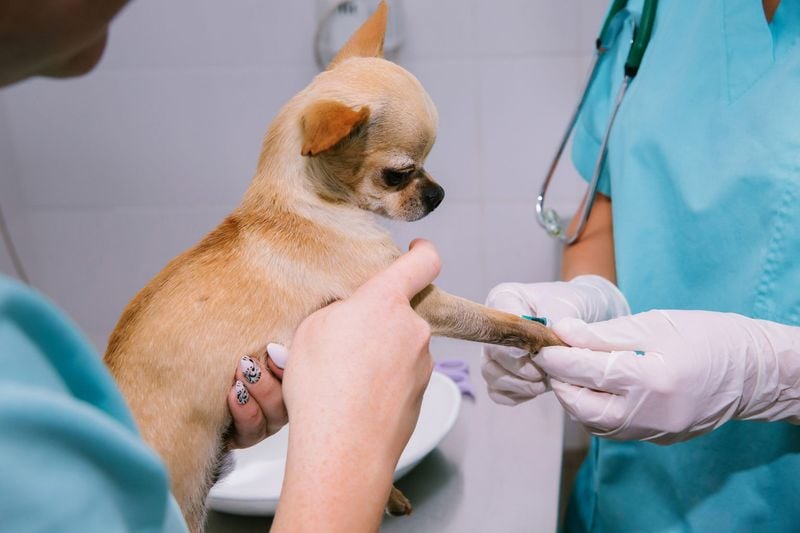Familial Kidney Disease in Dogs: Early Signs, Risks, and What to Do
When we think about hereditary conditions in dogs, hip dysplasia or certain eye diseases might come to mind first. But one lesser-known, and often overlooked, genetic issue is familial kidney disease (FKD).
This inherited disorder affects the kidneys’ ability to function properly, and in many cases, it begins silently—well before any outward signs appear. For some breeds, it’s not just a possibility; it’s a known risk embedded in their DNA.
The scariest part? Dogs with FKD can appear perfectly healthy in their early months, only to develop severe kidney problems later in life.
Since this condition is passed down genetically, it’s not something you can always prevent—but with the right knowledge, you can catch it early, manage it better, and even avoid it entirely in future generations through responsible breeding practices.
Whether you’re a dog parent to a breed known for this condition, a potential puppy buyer doing your homework, or a loving owner facing a recent diagnosis, understanding FKD is essential.
Early detection and proactive care can mean the difference between years of quality life and a devastatingly short timeline.
This article breaks down the ten most important things you need to know about familial kidney disease in dogs—from the breeds most commonly affected, to the symptoms you shouldn’t ignore, to the vital role of genetic testing.
We’ll also cover what living with this condition looks like and how you can support your furry friend every step of the way.
1. What Is Familial Kidney Disease?
Familial kidney disease (FKD) is a genetic disorder that affects the kidneys’ structure and function.
It’s inherited, meaning it’s passed down through specific bloodlines, and it causes the kidneys to gradually lose their ability to filter waste from the bloodstream.
Unlike acute kidney conditions caused by toxins or infections, FKD progresses silently and steadily. There’s no known cure, and the damage often starts before a dog even shows symptoms.
This is why early awareness is so important—catching it before symptoms appear can help extend your dog’s quality of life.
2. Breeds Most Commonly Affected
While any dog could theoretically inherit FKD, some breeds are far more predisposed due to genetics. Bull Terriers, Samoyeds, Shih Tzus, Lhasa Apsos, and Soft-Coated Wheaten Terriers are among the most frequently affected.
In these breeds, FKD is often well-documented and known within breeding circles. Reputable breeders should screen their dogs for kidney abnormalities, especially if there’s a family history.
If you’re adopting or buying a puppy from one of these breeds, ask about parental health testing—it’s one of the best early defenses.
3. How It Differs from Acquired Kidney Disease
Acquired kidney disease happens due to outside factors—like toxins, infections, poor diet, or aging. It can develop at any time in a dog’s life, and while still serious, it’s usually not inherited.
Familial kidney disease, on the other hand, is encoded in the dog’s DNA. The damage often starts early, even when a pup looks perfectly healthy.
Unlike some acquired conditions, FKD usually doesn’t respond well to reversal therapies—it’s about slowing progression rather than curing it.
4. Symptoms to Watch For
The early signs of FKD can be subtle. Your dog might drink more water than usual, urinate frequently, or begin to lose weight without explanation. Some dogs become less playful or seem tired more often.
As the disease advances, symptoms become harder to ignore. Vomiting, poor appetite, bad breath, and visible weakness are red flags.
Sadly, by the time many dogs show these signs, a significant amount of kidney damage may already have occurred. Catching it early can truly make a difference.
5. When Symptoms Typically Appear
In many cases, symptoms of FKD show up during puppyhood or adolescence. Depending on the breed, some dogs may show signs as early as 6 months, while others might remain symptom-free until age two or three.
This delayed onset can make it tricky for owners and even vets to detect. Many dogs seem perfectly healthy on the surface, only to receive a diagnosis after routine bloodwork or sudden health changes.
That’s why genetic and early diagnostic testing is so important, especially for high-risk breeds.
6. Diagnostic Methods
Detecting FKD requires a mix of clinical tools. Vets typically start with blood tests that check for elevated waste products like creatinine and BUN, both of which increase when kidneys begin to fail.
Urine tests can also reveal abnormalities, such as diluted urine or the presence of protein, which signal that filtration is compromised. In some cases, ultrasound imaging helps evaluate kidney size and structure.
And for certain breeds, genetic testing can confirm whether a dog carries the gene responsible for FKD—sometimes even before symptoms begin.
7. Why Early Detection Is Crucial
Early detection doesn’t just buy time—it buys quality of life. When caught early, dietary changes, medication, and lifestyle adjustments can help delay the onset of severe symptoms.
Dogs diagnosed in the early stages often live longer and more comfortably than those diagnosed after kidney failure has begun.
Routine checkups, especially for high-risk breeds, should include kidney screenings. The earlier you catch it, the more control you have over your dog’s comfort and longevity.
8. Treatment and Management Options
There’s no cure for familial kidney disease, but that doesn’t mean there’s no hope. Specialized kidney-friendly diets can reduce strain on the kidneys and slow disease progression.
Your vet may also recommend phosphate binders, fluid therapy, and medications to manage nausea or high blood pressure. Regular checkups become essential, and in some cases, dogs may require subcutaneous fluids at home.
It takes commitment—but many dogs respond well to a consistent care plan and can live happy, meaningful lives for years.
9. The Role of Genetic Testing in Breeding
Genetic testing is a game-changer when it comes to preventing FKD in future generations. Responsible breeders use these tools to screen for kidney-related mutations before breeding decisions are made.
By identifying carriers and avoiding high-risk pairings, breeders can help reduce the prevalence of FKD in their lines.
If you’re considering buying a dog from a breed with known FKD risk, ask the breeder for test results. Transparency on genetic health isn’t just a bonus—it’s a must.
10. How to Support a Dog with FKD
Caring for a dog with familial kidney disease is all about support, structure, and love. Stick to vet-approved diets, keep them well-hydrated, and monitor for any subtle shifts in behavior or appetite.
Make life easier for them—minimize stress, offer frequent bathroom breaks, and ensure they always have access to fresh water. Regular vet visits are your ally, and so is your presence.
Even when facing a chronic illness, your dog can still experience comfort, joy, and companionship, thanks to your care.
















